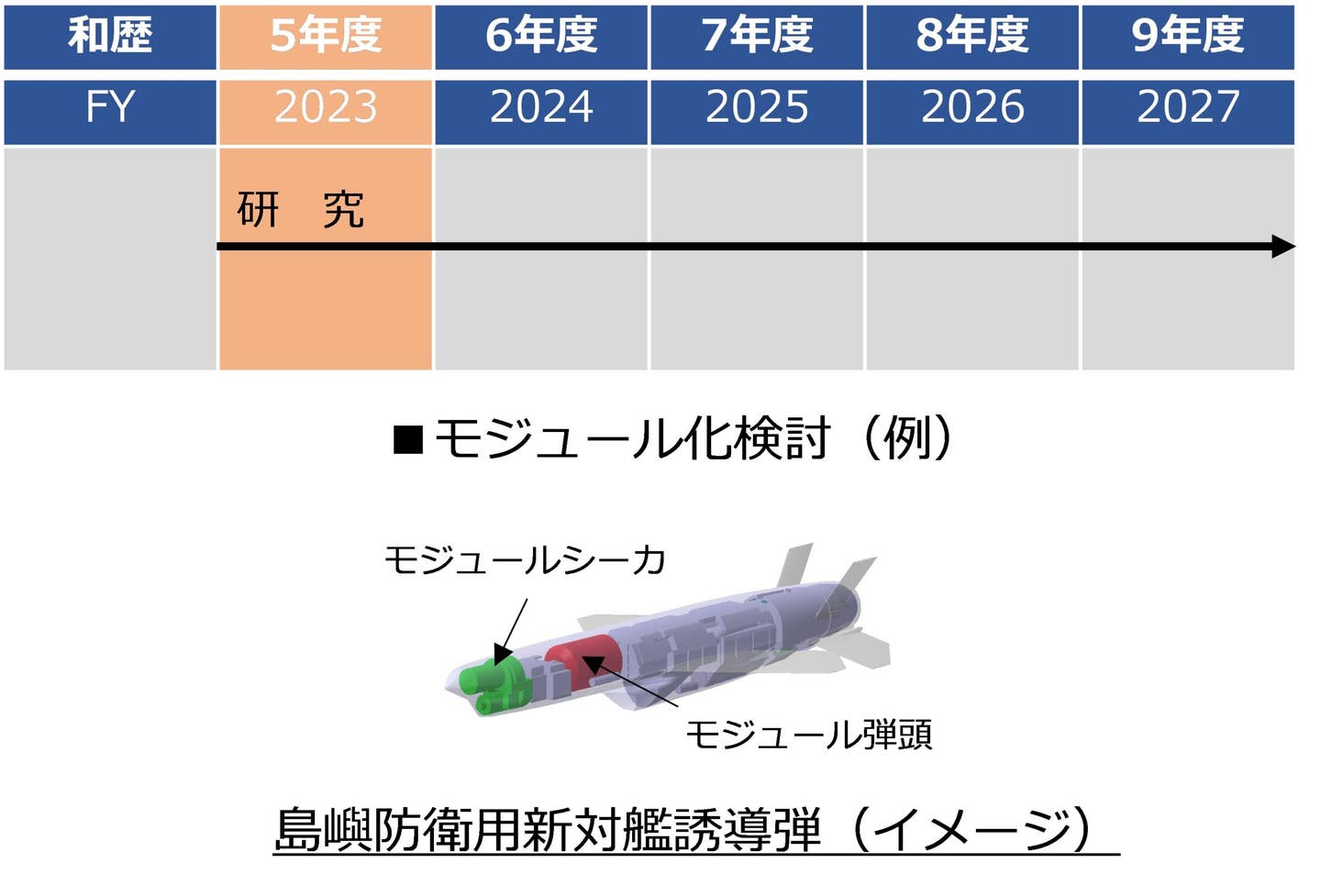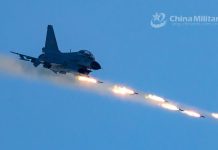Japan’s Ministry of Defense has recently announced that it has granted Kawasaki Heavy Industries (KHI) a contract to research and develop an advanced coastal, anti-ship cruise missile.
Ukraine War: China ‘Prepares’ For Kakhovka Dam-Like Disaster; Heavy Quadcopter Rescues Flood Victims In New Drills
In a press release issued on June 6, the Japanese MoD revealed that KHI was awarded a contract on June 2 to develop a new cruise missile, with the research and development period set from 2023 to 2027 as part of the country’s efforts to enhance its defense capabilities.
The contract awarded for the new surface-to-ship missile (SSM) is among several missile projects recently unveiled by Tokyo to strengthen “island defense” as part of the country’s Defense Buildup Program.
The introduction of this cutting-edge SSM aims to deter potential Chinese military aggression along the First Island Chain, with likely deployment envisaged on Japan’s southern islands, including the strategically vital Senkaku Islands.
The first cutaway graphic of the missile was also made available by the Japanese MoD as part of the news release. The missile features a pair of pop-out wings and four fins at the rear. The nose part contains two distinct sensors in a top-bottom arrangement and precision warhead location.

Over several years, Kawasaki Heavy Industries (KHI) has been developing a prototype for a long-range cruise missile. The company reportedly has been working on the project in accordance with the exact requirements set by the Japan Self-Defense Forces (JSDF).
In March 2023, showcasing their progress, KHI revealed a scale model of the “island defense anti-ship missile” during the DSEI Japan 2023 exhibition held in China, marking a significant step in the development process, according to the Naval News.
At the time, Kawasaki Heavy Industries (KHI) confirmed that the missile was equipped with a dual-mode seeker, incorporating infrared (IR) and radio frequency (RF) technology.
Kawasaki Heavy Industries (KHIofficials) stated the missile is specifically designed to achieve extended range, maintain a low radar cross-section (RCS), exhibit exceptional maneuverability, and ensure high survivability by evading interception from enemy air defense systems.
During a press conference in January, Japan’s Defense Minister Hamada Yasukazu also highlighted that the new surface-to-ship missile (SSM) project aims to capitalize on the long-range and high-mobility technologies that have been acquired through extensive research on the elemental aspects of missile technology.
The modular design of the missile enables it to be adaptable for various missions, allowing for different payload configurations such as land-attack.
The “Island Defense Anti-Ship Missile” features a length ranging between six and ten meters (around 20 to 33 feet), a range exceeding 1,000 kilometers (just over 621 miles), and the capability to achieve a subsonic speed of Mach 0.8.
The press release doesn’t mention the contract value, but Japan’s budget for Fiscal Year 2023 set aside $257 million for research on a new multi-mission anti-ship missile.
Japan’s Efforts To Acquire ‘Counter Strike’ Capability
Japan has been aiming to invest heavily in developing land attack and anti-ship cruise missiles with ranges comparable to the Tomahawk Land Attack Missiles (TLAM).
This effort originated from concerns over North Korea’s nuclear and missile programs and regional tensions involving China. Tokyo is also exploring the integration of long-range cruise missiles into its current and future submarine fleet.
The country has already announced its intentions to develop enhanced variants of the Type 12 missile, capable of being launched from aircraft and ships.
This upgraded iteration is set to possess an impressive range of up to 1,000 kilometers (620 miles), representing a five-fold increase compared to the current version’s range of approximately 200 kilometers.
In December 2022, Japanese Prime Minister Fumio Kishida directed his defense and finance ministers to allocate funds to raise Japan’s defense budget to 2% of the current GDP by 2027.
:quality(70)/cloudfront-us-east-1.images.arcpublishing.com/archetype/GDOW45C525DWND7AV6V47MIX7I.jpg)
In addition to Japan’s efforts in developing indigenous missiles, Prime Minister Kishida revealed in February that the country is set to procure up to 400 Tomahawk cruise missiles from the United States.
Tokyo’s ongoing military buildup occurs against rising tensions with China, which has been bolstering its naval and air presence in regions near Japan.
Beijing’s assertive actions include claiming sovereignty over the Senkaku Islands, an uninhabited chain controlled by Japan in the East China Sea.
These developments have intensified regional concerns and prompted Tokyo to upgrade its defense capabilities to safeguard its territorial integrity and national security.
Meanwhile, Beijing has also been upping military pressure on Taiwan, a self-governed island that Japanese leaders consider vital to Japan’s security.
The region witnessed a recent escalation in tensions when Chinese military aircraft and warships engaged in aggressive maneuvers targeting the US military.
Nonetheless, introducing a designated “new SSM” focusing on “island defense” signifies Japan’s concerns over territorial disputes with both China, involving islets in the East China Sea, and Russia, concerning Sakhalin.
- Contact the author at ashishmichel(at)gmail.com
- Follow EurAsian Times on Google News





